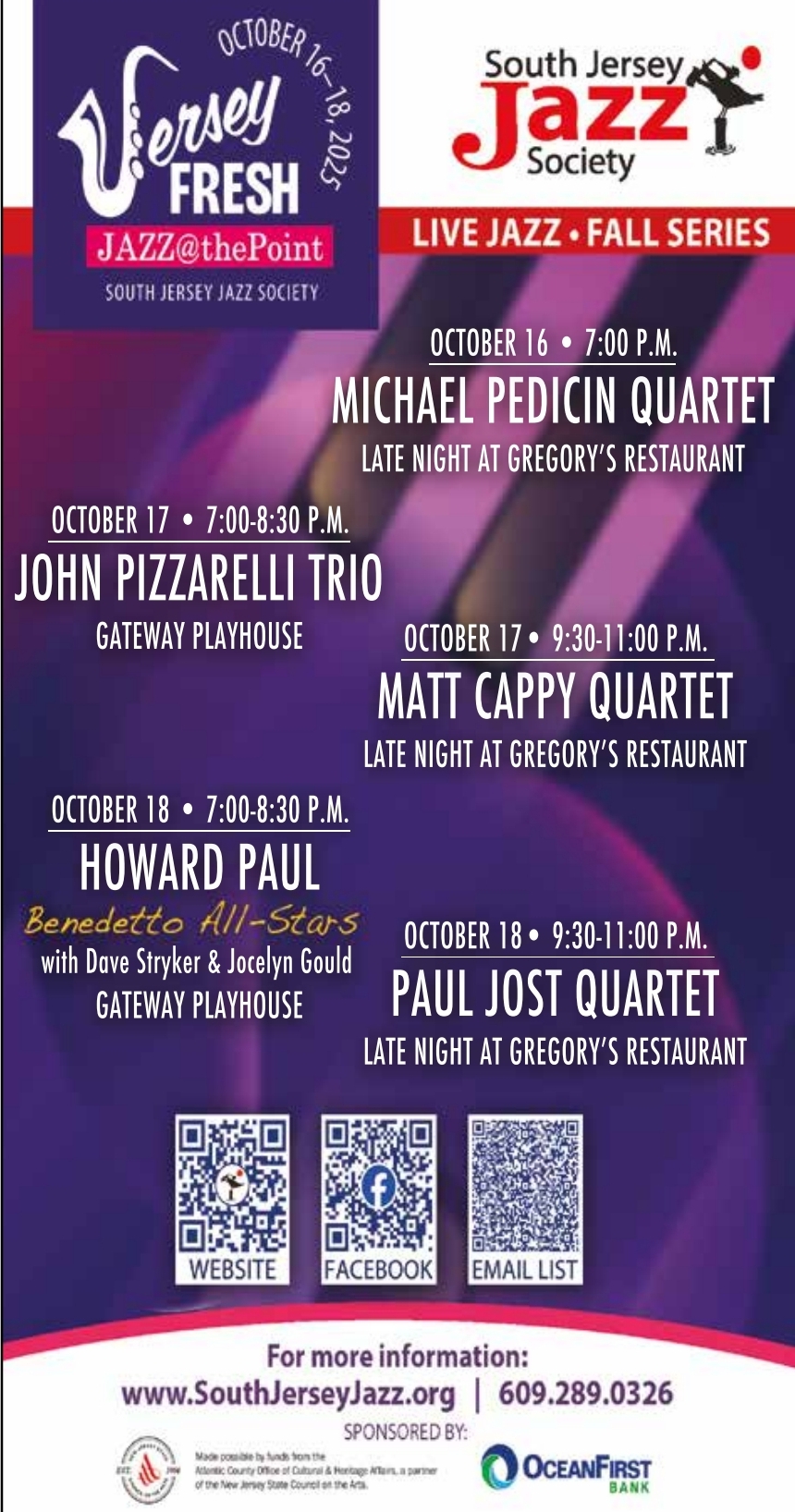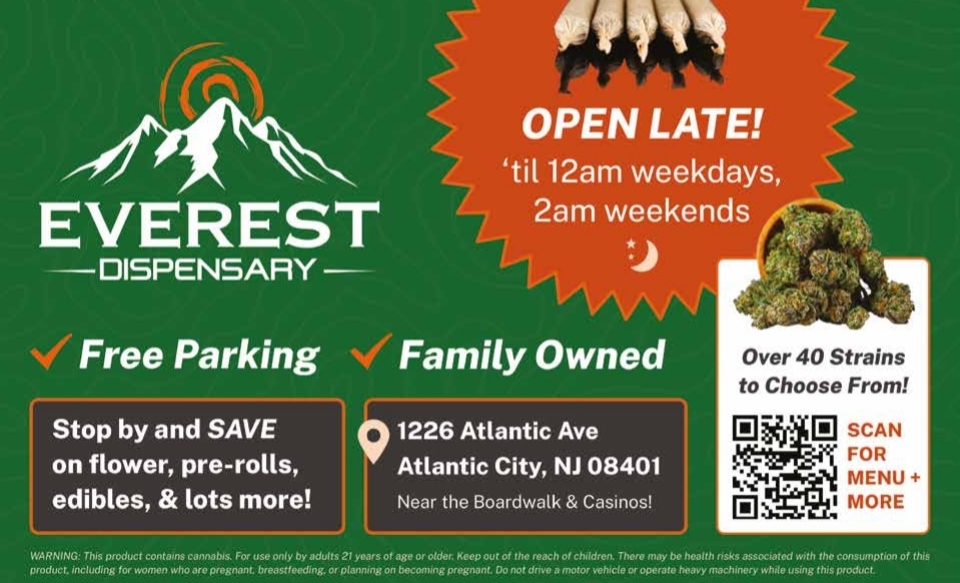Family Tides
With Halloween fast approaching, kids are abuzz with plans for costumes and candy hauls. But for families managing food allergies, trick-or-treating often means balancing caution with fun.
Egg Harbor Township mother Gina Wallace discovered her youngest of four children, 6-year-old Julian, was allergic to peanuts when he was just 10 months old. At the time, he had also been diagnosed with allergies to eggs and dairy.
“It was not a dairy-sensitive thing; he was actually allergic to dairy, and he would break out in hives everywhere,” Wallace explained. “When he turned about 3, he did grow out of egg and dairy. But he’s still actively allergic to peanuts, and that is probably something he won’t grow out of.”
According to the Teal Pumpkin Project, a worldwide initiative aimed at keeping Halloween inclusive and safe for kids with allergies, about 1 in 13 children in the U.S. have a food allergy that can cause life-threatening reactions. Launched by FARE (Food Allergy Research & Education), the project encourages households to display teal pumpkins or signs to show they have nonfood treats available for children with allergies.
Jade Hutchison’s 6-year-old son Calvan was diagnosed with an egg allergy around age 1. The Egg Harbor Township mom, like Wallace, will be bringing an EpiPen while trick-or-treating.
“If I see a house that has a teal pumpkin outside, I feel like I can relax a little bit while trick-or-treating. I know that there’s going to be a separate bagged option for allergy kids,” Hutchison said.
Teaching safety through treats
For parents, Halloween can be a chance to help kids with food allergies learn what’s safe while trick-or-treating. It’s also an opportunity to spread awareness along the way.
“When he was younger, I was walking up with him and making choices with him but kind of for him. He’s at the age now where he knows what he can and can’t have, and so when given the option of a big bowl of candy, he’s more likely to go toward the gummy candy he knows he can have,” Hutchison said.
Wallace’s son is also at an age where he knows what he can or can’t have, and that education started early. Like many allergy parents, she sets clear boundaries for trick-or-treating and requires her son to ask before eating anything.
“We had to start when he was young,” Wallace said. “He has to ask us if we’re trick-or-treating if he can have something. He just has to show it to us. But he’s very knowledgeable because that’s how he’s grown up. It’s kind of like a learned habit. He knows he can’t have Reese’s, Snickers, Butterfingers or Peanut M&M’s.”
If he happens to grab candy with peanuts, Wallace said he’s happy to hand it to a family member or swap with a sibling later.
Hutchison generally avoids letting her son eat from his bag while trick-or-treating. That rule, she said, is also about protecting others and ensuring her three kids aren’t eating candy with allergens like peanuts before sticking their hands into shared candy bowls.
“I don’t let him pick out of his bag while we trick or treat, unless it’s a gummy candy like Sour Patch or Skittles, then it’s a yes. But I really don’t let him randomly pick in his bag and eat,” she said. “Even though it’s been five years, I’m still learning, too. I still find ways to be better at being an allergy parent and be conscious of other kids’ allergies.”
Wallace said for families new to food allergies, early education matters.
“Teaching your kid, and their siblings and family members. I think our most important thing is just asking — kids are so quick to open something up,” she said.
When trick-or-treating in a group, Hutchison and Wallace both said educating other parents and kids can be important, too.
Hutchison said she’s grateful when others take it seriously, but part of raising awareness is also about helping others understand that food allergies aren’t a dietary choice.
“It’s not a fad, and it’s not a diet choice. It’s not a choice — if he eats this candy or this specific thing, he may die,” Hutchison said. “As an allergy mom, I feel like I’m thinking of that every day when I’m sending him off to school, that I’m sending him kind of into the unknown, hoping that he doesn’t encounter this allergy because it is life-threatening for him.”
Offering sweet alternatives
The Teal Pumpkin Project’s website resources note there’s no such thing as “allergy-free candy.” Common allergens often appear in sweets in surprising ways — candy corn can contain egg whites, licorice may include wheat and even dark chocolate can have traces of milk. Mini candy ingredients can also differ from full-sized versions, and ingredients can change year to year, making it essential to read every label.
To keep Halloween inclusive, households can set out a separate bowl of small toys alongside candy or instead of it, like glow sticks, bubbles, stickers, fidget toys, playing cards or spider rings. Nonfood treats also have the bonus of being reusable year after year.
Wallace said she’s noticed greater awareness around food allergies, and finding allergy-conscious homes on Halloween is always appreciated.
“Some houses now, because of food allergies, are giving out toys and fruit snacks and juice boxes, and I think that’s also wonderful because they’re accommodating. It’s less the parent has to worry about,” Wallace said.
Hutchison feels similarly.
“I’ve been to houses before where they have the big mixed bowl of candy, and then for allergy kids they have portioned out allergy-friendly things or little toys in prepacked bags. That is like the most amazing thing that I feel like neighbors can do, which I know is really time-consuming and expensive, but it’s really nice to have neighbors do that,” Hutchison said.
To learn more about the Teal Pumpkin Project and how to participate, visit foodallergy.org.
Madison Russ is an award-winning journalist, copy editor and adjunct professor of communication based in Atlantic County. An Ocean City native, Madison is passionate about telling stories that matter to locals, often spotlighting nonprofits and exploring the area’s vibrant arts scene.
















